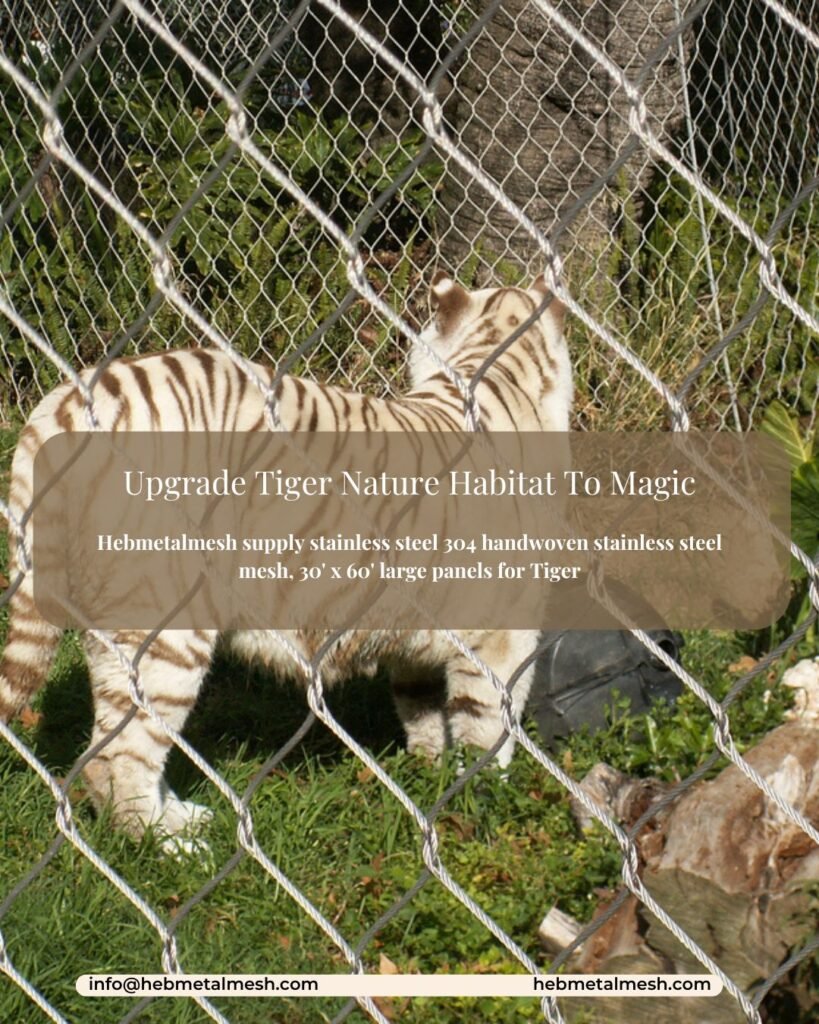Introduction to Tiger Natural Habitats
Tigers (Panthera tigris) are apex predators that hold a significant ecological role within their natural habitats, which primarily include dense forests, grasslands, and wetlands. Geographically, tigers are found in a range of environments from the tropical rainforests of Southeast Asia to the temperate forests of Siberia. Their distribution is largely concentrated in countries such as India, China, Nepal, Bhutan, and parts of Southeast Asia. Each type of ecosystem provides essential resources that support the tiger’s lifecycle, such as prey availability, water sources, and adequate cover for hunting and raising their young.
The tiger’s natural habitat plays a critical role in its survival. Preferred environments typically include areas with a rich diversity of flora and fauna, as these ecosystems are vital for supporting the prey species that tigers rely upon, such as deer and wild boar. Additionally, the presence of water bodies within their territory is crucial not only for quenching their thirst but also for establishing territories and reproductive success. The balance of these ecosystems directly impacts the health and population dynamics of tiger communities.
However, the natural habitats of tigers face significant threats from human activities, including deforestation, urbanization, and poaching. As natural landscapes are altered or destroyed, the delicate balance that sustains these magnificent creatures is disrupted, leading to fragmented populations and reduced genetic diversity. Therefore, the preservation of tiger natural habitats is of paramount importance for conservation efforts. Implementing sustainable practices, restoring degraded areas, and protecting key ecosystems are critical steps towards ensuring the longevity of tiger populations and their environments. These measures not only benefit tigers but also contribute to the broader biodiversity and ecological health of our planet.
The Need for Habitat Support: Challenges Facing Tigers
Tigers, as apex predators, play a critical role in maintaining the health and balance of their ecosystems. However, their natural habitats face numerous challenges that threaten both their survival and the integrity of these environments. One of the most significant threats is habitat destruction, primarily driven by human activities such as deforestation, urbanization, and agricultural expansion. These actions lead to the fragmentation of tiger natural habitats, forcing these magnificent creatures into smaller, isolated patches of land that cannot sustain their populations.
Additionally, poaching significantly impacts tiger populations. The demand for tiger parts in traditional medicine and as status symbols has led to illegal hunting, putting immense pressure on already dwindling numbers. Conservation efforts are further complicated by the lack of effective law enforcement in many areas, allowing poachers to operate with relative impunity. This underscores the urgent need for comprehensive anti-poaching measures combined with public awareness initiatives aimed at reducing demand.
Human-wildlife conflict is another pressing challenge for tiger conservation. As human populations encroach upon tiger habitats, encounters between humans and tigers become more frequent. These conflicts often result in the killing or displacement of tigers, driven by fear of their predatory nature. Notably, livestock predation can lead to retaliatory killings by farmers, exacerbating the decline in tiger numbers. To mitigate this, innovative solutions must be developed that foster coexistence between tigers and local communities, such as compensation schemes for livestock losses.
The need for habitat support is paramount in addressing these issues. Protecting and restoring tiger natural habitats not only aids the survival of tigers but also ensures the health of the broader ecosystem. Effective conservation strategies, including community involvement and sustainable land-use practices, are crucial to allow tigers to thrive in their natural environments once more.

Introducing Wire Rope Mesh: A Modern Solution
Wire rope mesh has emerged as a revolutionary solution for ensuring the safety and longevity of tiger natural habitats. As tiger populations face increasing threats from habitat loss and poaching, the need for innovative fencing solutions that do not compromise their natural behavior becomes paramount. Wire rope mesh offers a unique combination of durability and flexibility, making it a preferred choice for constructing enclosures and barriers in wildlife reserves and zoos.
One of the key advantages of wire rope mesh is its ability to provide a secure yet open environment for tigers. Traditional fencing methods often create barriers that confine animals, limiting their ability to move freely and express natural behaviors. In contrast, wire rope mesh allows tigers to observe their surroundings while ensuring safety. The mesh’s design permits visibility and airflow, enabling tigers to feel less stressed and more comfortable within their enclosures.
Moreover, the application of wire rope mesh is not limited to just enclosures; it also serves as an effective method for creating perimeters that protect both tigers and visitors. This dual functionality is critical in environments where human-animal interactions are inevitable. By implementing this modern material, wildlife establishments can mitigate risks while ensuring that the tigers remain highlighted within their natural habitat, fostering an educational experience for visitors without compromising animal welfare.
Wire rope mesh is crafted from stainless steel, offering resistance to wear and environmental degradation. This durability is an essential factor, especially in tiger natural habitats where exposure to various weather conditions and physical elements is a constant concern. The lifespan of wire rope mesh exceeds that of conventional materials, thereby reducing maintenance costs and enhancing the overall sustainability of wildlife enclosures.
In conclusion, the integration of wire rope mesh into the design of tiger habitats represents a significant advancement in wildlife preservation strategies. It balances safety, longevity, and the necessity for tigers to live in conditions that closely mimic their natural behaviors. With such innovations, we move a step closer to creating harmonious environments for both tigers and their caretakers.
304 Material: The Gold Standard for Durability
In the pursuit of creating and maintaining secure environments for tigers, the choice of materials used in constructing barriers and enclosures is of paramount importance. One material that stands out for its exceptional attributes is 304-grade stainless steel. Renowned for its robust durability and resistance to various environmental factors, 304 stainless steel proves to be a premier choice for wire rope mesh designed for tiger natural habitats.
The attributes of 304-grade stainless steel stem from its unique composition, which typically includes 18% chromium and 8% nickel. This combination not only enhances its corrosion resistance but also allows the material to withstand harsh weather conditions. This resistance is particularly vital for habitats exposed to varying climates, as it prevents degradation and ensures that the structural integrity of the wire rope mesh is maintained over time. Hence, implementing 304 stainless steel in enclosures leads to fewer replacements and repairs, establishing a more stable environment for tigers.
Furthermore, the longevity of 304-grade stainless steel translates into a cost-effective solution for wildlife reserves and conservation areas. While the initial investment may be higher compared to other materials, the long-term benefits of reduced maintenance and replacement costs significantly outweigh the upfront expenses. This economic feasibility promotes sustained investment in tiger natural habitats, allowing conservationists to allocate financial resources towards enhanced care and support for these magnificent creatures.
Utilizing 304-grade stainless steel not only promotes safety for tigers but also fosters an environment conducive to their natural behaviors. When enclosures are built with durability in mind, the impact on tiger habitats is profound, ensuring both animal welfare and the preservation of biodiversity in regions where these animals roam. The application of this material is, therefore, a crucial component in the ongoing efforts to enhance tiger natural habitats around the globe.
Dimensions for Success: The Importance of Size
When designing secure enclosures for tigers, the dimensions of wire rope mesh panels play a crucial role in ensuring the safety and well-being of both the animals and visitors. One of the optimal sizes for these panels is 30′ x 60′. This expansive measurement facilitates the creation of an environment that caters to the natural behaviors and movements of tigers, which are known for their vibrant and agile nature.
The larger dimensions of 30′ x 60′ allow for a more generous space, mitigating the risks associated with cramped enclosures. When tigers have ample room to roam, explore, and exhibit natural behaviors, it not only enhances their physical well-being but also reduces stress levels. Wire rope mesh of this size can be effectively utilized to enclose these areas, creating a barrier that allows visitors to observe these majestic creatures without compromising their safety or comfort. A properly sized enclosure fosters a more natural habitat for the tigers, enabling them to engage in activities such as climbing, resting, and playing, which are vital for their mental stimulation.
Moreover, the use of larger mesh panels minimizes the potential for injury or escape. The expansive design can handle the natural physical behaviors of tigers, preventing them from injuring themselves on smaller installations. Wire rope mesh, when strategically sized to 30′ x 60′, ensures that the barriers are not just secure but also visually appealing, enhancing the overall viewing experience for visitors. This visual aspect contributes significantly to the educational purpose of such enclosures, as it offers an unobstructed view while maintaining a safe distance.
In conclusion, the use of larger dimensions for wire rope mesh panels is critical for creating suitable tiger natural habitats. By choosing the 30′ x 60′ size, zookeepers and wildlife managers can effectively support the health, safety, and longevity of both tigers and their human admirers.
Safety Considerations for Tigers and Visitors
The implementation of wire rope mesh in tiger natural habitats introduces several essential safety measures that benefit both the majestic creatures and the visiting public. As wild animals, tigers possess innate behaviors and instincts that may pose risks during interactions in a confined environment. By integrating wire rope mesh, handlers and conservationists can effectively reduce the chances of escape while ensuring that human encounters are minimized or prevented altogether.
One of the primary safety considerations is the structural integrity of the wire rope mesh. The mesh must be robust enough to withstand the strength and agility of tigers, as well as resist potential environmental factors. Proper installation and regular maintenance checks play a crucial role in making sure that the mesh remains secure over time. These measures help form a protective perimeter, allowing tigers to roam freely within their designated areas while remaining contained, thereby reducing any possibility of an escape incident.
Furthermore, wire rope mesh fosters a safer environment for visitors. By creating a physical barrier that is visually transparent, the mesh allows onlookers to observe the tigers in their natural habitat without compromising their safety. It’s vital that visitors feel secure when observing these magnificent animals, and wire rope mesh can significantly enhance the overall experience by facilitating interactions while ensuring a safe distance is maintained. This harmony between the animals’ natural behaviors and human observation creates an enriching environment for both parties.
In summary, the thoughtful integration of wire rope mesh into tiger habitats not only safeguards the animals but also protects visitors. These preventative measures yield a secure and enjoyable setting that can promote education and conservation efforts, ultimately ensuring the longevity and welfare of tigers in their natural habitats.
Engaging with the Community: Boosting Awareness and Conservation
Community engagement is vital for the protection of tiger natural habitats. Local communities often coexist with wildlife, and their involvement is crucial for the success of conservation efforts. By fostering a sense of ownership and responsibility for these habitats, we can encourage sustainable practices that benefit both tigers and the people living near them. Effective strategies to involve local populations include educational programs, workshops, and partnerships with conservation organizations.
One of the most successful methods to engage communities is through educational outreach. Teaching individuals about the ecological roles that tigers play helps to contextualize the importance of preserving their habitats. Informative sessions can highlight the value of biodiversity and the ecological balance achieved through the protection of these majestic animals. Furthermore, local folklore and cultural ties to wildlife can be integrated into these programs, creating a more relatable approach to conservation.
Additionally, incorporating wire rope mesh into community projects presents a practical and innovative tool for promoting habitat safety. This durable material can be used to create safe enclosures or barriers that protect both tigers and local livestock. By showcasing wire rope mesh as a sustainable option, communities can learn how to coexist peacefully with wildlife while ensuring their livelihoods are not threatened. Furthermore, community members can participate in the installation and maintenance of these structures, fostering a sense of achievement and perseverance towards conservation efforts.
Visitors to areas where wild tiger populations reside can also play a role in raising awareness. Eco-tourism initiatives can provide funding for local conservation projects and engage tourists in learning about habitat protection. Through responsible ecotourism practices, visitors become ambassadors for tiger natural habitat conservation, encouraging deeper commitments from local communities. Overall, when communities participate actively in tiger conservation, the prospects for preserving their natural habitats markedly improve.
Frequently Asked Questions About Tiger Natural Habitats
When designing a tiger nature habitat, prioritize space, natural vegetation, water sources, and terrain diversity. Tigers require large, secure areas to roam, hunt, and exhibit natural behaviors. Incorporate features like dense foliage, pools, and elevated platforms to mimic their wild environment. Safety barriers (e.g., moats or reinforced fencing) and climate adaptability for the tiger’s native region are also critical.
A tiger nature habitat should span at least 2–5 acres per tiger, though larger spaces are ideal to encourage exploration and reduce stress. The size depends on the number of tigers, local regulations, and conservation goals. Wild tigers roam vast territories, so replicating this scale, even minimally, supports physical and mental well-being.
Include elements like prey-simulating enrichment (e.g., hanging meat or scent trails), water bodies for swimming, and varied terrain (rocky outcrops, grasslands). Dense vegetation and secluded areas allow tigers to hide, stalk, and rest privately. Regular rotation of enrichment tools prevents boredom and mimics the unpredictability of their natural ecosystem.
Tigers adapt to diverse climates, but the habitat should align with the subspecies’ native environment (e.g., tropical for Bengal tigers or temperate for Siberian tigers). Provide shaded areas, heated shelters in colder regions, and cooling pools in hotter climates. Microclimates within the habitat let tigers self-regulate their comfort.
Use invisible barriers like tempered glass, moats, or raised viewing platforms to keep visitors safe without disrupting the habitat’s aesthetics. Avoid overcrowding viewing areas to minimize stress on tigers. Educational signage and guided tours can help visitors appreciate the tigers’ natural behaviors from a respectful distance.
Conclusion
The preservation of the tiger natural habitat is a critical issue that encompasses both the survival of this majestic species and the ecological balance of their environment. Throughout this blog post, we have examined the various ways in which innovative materials, such as wire rope mesh, can enhance the safety and longevity of these habitats. By incorporating such materials into conservation strategies, we provide a robust solution that mitigates risks to both tigers and their ecosystems.
Wire rope mesh serves as a versatile tool in habitat preservation, enabling safer interactions between wildlife and humans while minimizing human encroachment on critical territories. Its flexibility and durability make it an ideal choice for fencing, preventing poaching, and safeguarding the extremely sensitive areas that constitute a tiger’s natural habitat. The use of such technology represents a forward-thinking approach that aligns well with conservation efforts aimed at ensuring the survival of tigers in the wild.
Moreover, combining these innovative solutions with proactive conservation programs is essential. Conservationists and the general public alike must prioritize initiatives aimed at educating communities about the significance of tiger habitats. This can lead to increased awareness and stronger support for measures that bolster the safety and integrity of these precious environments. Achieving a sustainable future for tigers requires collective responsibility; each individual can contribute to creating and maintaining safe habitats by supporting relevant organizations and advocating for responsible environmental policies.
In conclusion, the collaboration between advanced materials like wire rope mesh and comprehensive conservation strategies presents an optimistic outlook for the future of tiger natural habitats. As stakeholders in this global ecosystem, our concerted efforts can lead to healthier and safer habitats, ensuring a brighter future for tigers and their environments.



